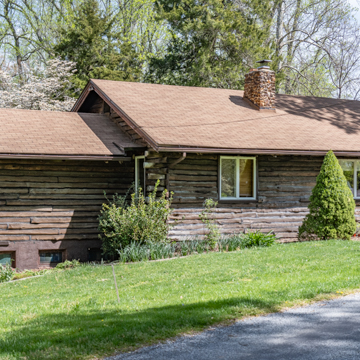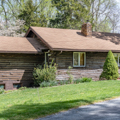This progressive bayfront community was established in 1935 by G. Flippo Gravatt and Annie E. Rathburn, a husband-and-wife team of forest pathologists for the U.S. Department of Agriculture, who conceived of it as a summer colony for scientists. The bylaws called for the construction of wood houses—many of which were built in rustic fashion from the blighted chestnut trees located on the property—and protection of such landscape features as the cliffs and ravines, trees, and other indigenous plants. Like the founder’s own Chestnut Cabin and the guest quarters, Flippo’s Cabin, the Community House was erected of logs milled on-site, tightly joined, and held by simple saddle notching. The low gable-roofed building features an ironstone foundation, fireplace, and chimney. Emblematic of the numerous bayside summer communities built during the first half of the twentieth century, Scientists’ Cliffs now includes over two hundred mostly rustic-style houses.
You are here
SCIENTISTS’ CLIFFS AND THE JOSEPH P. FLIPPO COMMUNITY HOUSE
If SAH Archipedia has been useful to you, please consider supporting it.
SAH Archipedia tells the story of the United States through its buildings, landscapes, and cities. This freely available resource empowers the public with authoritative knowledge that deepens their understanding and appreciation of the built environment. But the Society of Architectural Historians, which created SAH Archipedia with University of Virginia Press, needs your support to maintain the high-caliber research, writing, photography, cartography, editing, design, and programming that make SAH Archipedia a trusted online resource available to all who value the history of place, heritage tourism, and learning.


























